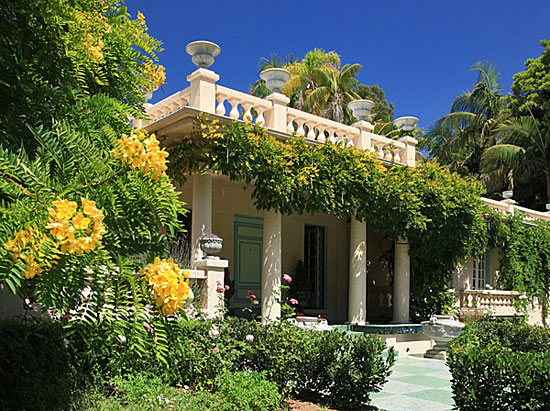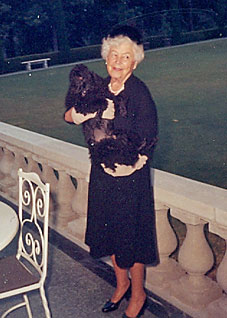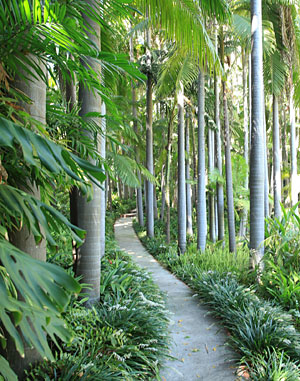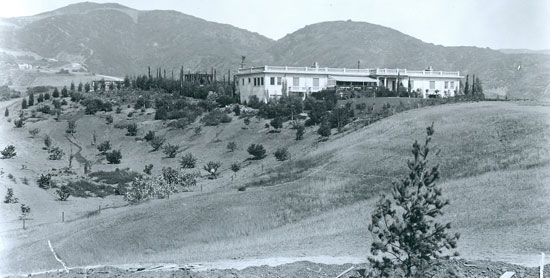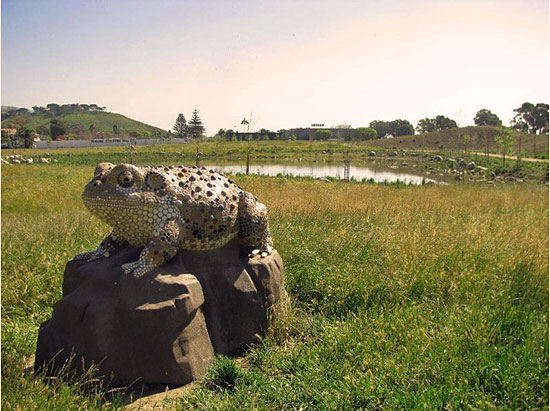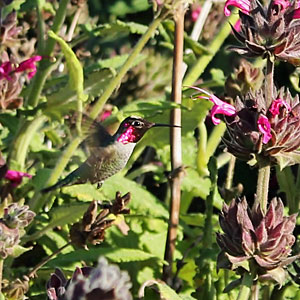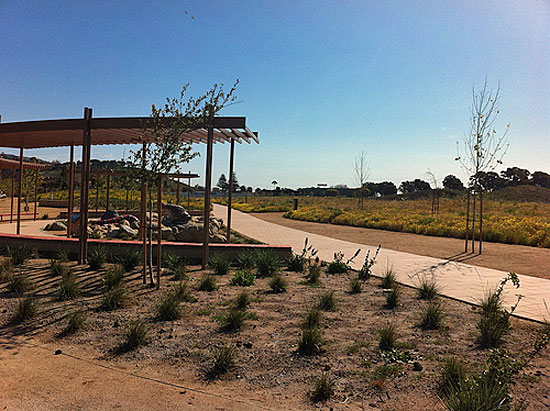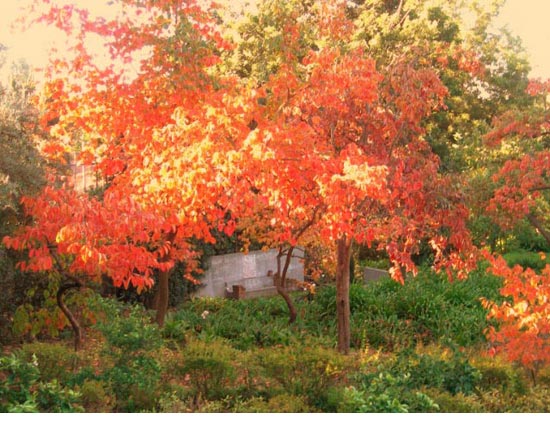Beverly Hills cultivates some history
Virginia Robinson put Beverly Hills on the map as an enclave of the rich and famous. Now, more than a century later, Beverly Hills has returned the favor to its storied grand dame.
The Virginia Robinson Gardens, bequeathed to Los Angeles County after its namesake’s death in 1977, last month became an official local historic landmark. Built in 1911 by the Robinson’s department store heir Harry Winchester Robinson and his then-new bride, Virginia, the 6½-acre estate on Elden Way—now run under the auspices of the Los Angeles County Department of Parks and Recreation—has long held landmark status at the state and national level.
“This was essentially the first great estate in Beverly Hills,” explains Robinson Gardens Superintendent Timothy Lindsay.
But Beverly Hills created its historic designation only a year ago, prompted by the near-demolition of an architecturally significant house designed by Richard Neutra. The city has since named seven local landmarks, with more in the pipeline, according to Noah Furie, a former Beverly Hills planning commissioner and founding chairman of the city’s new Cultural Heritage Commission.
The Robinson estate was the second property in the city to receive the designation, after the neighboring Beverly Hills Hotel.
“This is one of the most unique properties in our city,” says Furie. “With all its different types of gardens, and its owners being the founders of one of Los Angeles’ most important department store chains, and their many contributions to the immediate and greater community, it checked off multiple criteria in our ordinance.”
Furie says the new local ordinance has proven to be a milestone for Beverly Hills. Even before the aborted demolition of Neutra’s Kronish House in 2011, preservationists had feared for the city’s architectural history.
“It was getting to the point that, if we didn’t do something, our past would be lost forever,” he says. “Significant estates done by master architects had been subdivided into multiple properties. We’d lost, including major remodels, the Burton Green estate, the Max Whittier estate, the Gershwin House—the list is a mile long.”
The new preservation ordinance imposes strict rules for changing or demolishing buildings that are older than 45 years and that either have some historic or cultural significance or are designed by master architects.
The Robinsons discovered their site in the early 1900s while searching for the Los Angeles Country Club in what was then the rural edge of the city. When they finished the house, designed for them as a wedding gift by Virginia’s father, architect Nathaniel Dryden, fields of barley stretched before them to the horizon.
But as the city grew up, the property, which was landscaped by Virginia and a dozen full-time gardeners into an expansive collection of lush, terraced gardens, became a public gathering place and an A-list destination. The Italianate pool house alone was 3,000 square feet and the palm grove still boasts the largest collection of Australian king palms in the continental United States.
Celebrities from Mary Pickford and Douglas Fairbanks to Fred Astaire and Ginger Rogers cavorted at the Robinsons’ lavish parties, as did a who’s who of Southern California society and business. Even after Harry Robinson died in 1932, Virginia—who took over the department store chain that her husband’s father had founded—maintained the civic momentum, accompanied by her beloved pets (she never had children and never remarried). For 33 years, her home was the site of a famed Hollywood Bowl kickoff gala; her last major domo came from the Vatican and spoke five languages, according to the estate superintendent Lindsay.
“Virginia Robinson worked with Dorothy Chandler to build the Music Center, she was great friends with Lillian Disney and the Duke and Duchess of Windsor,” Lindsay says.
And, he adds, Virginia adhered to a level of hospitality that would have impressed Downton Abbey.
“She had a large staff of 21 trained in the same level of etiquette as the White House,” says Lindsay. “After 6 p.m., the men all had to put on black tie and tails. Invitations were handwritten. There was always valet parking. When you arrived at the house, one man in white gloves would open the gate and another would open the door and announce your arrival, and she would meet you in the receiving line.
“Remember, Southern California was still pretty much a dusty cowboy town, in those days. But she set a standard for gracious living. She had a legendary elegance.”
Posted 2/7/13

